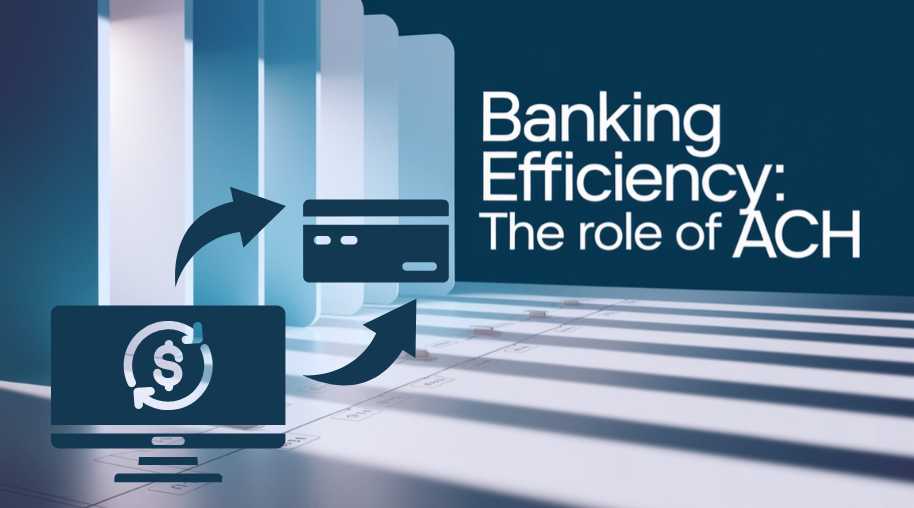ACH Full Form - Automated Clearing House
by Shashi Gaherwar
0 2131
Automated Clearing House: Streamlining Payments and Transactions for a Modern Financial Ecosystem
The world of finance is evolving rapidly, driven by technological advancements that are reshaping the way businesses and individuals handle transactions. One of the most significant innovations in the payment systems space is the Automated Clearing House (ACH). This electronic payment system has become a cornerstone of modern financial infrastructure, simplifying and streamlining payments, reducing costs, and increasing efficiency. Whether it’s for direct deposits, bill payments, or business-to-business (B2B) transfers, ACH plays a vital role in enabling smooth and secure transactions across the economy.

This article explores the significance of the Automated Clearing House, its operations, benefits, and its impact on modern financial transactions.
What is the Automated Clearing House (ACH)?
The Automated Clearing House is an electronic network used for processing financial transactions in the United States. It facilitates a wide range of transactions, including direct deposits, payroll payments, bill payments, and business transfers. The system allows payments to be made between financial institutions, eliminating the need for paper checks and speeding up the transaction process.
ACH is typically used for batch processing, meaning transactions are grouped together and processed at set intervals. This makes the system highly efficient, reducing the need for manual intervention and improving the speed and accuracy of payments. The ACH network operates under the governance of the National Automated Clearing House Association (NACHA), ensuring that it adheres to strict rules and regulations to maintain security and reliability.
How Does the ACH System Work?
The ACH system works by transferring funds electronically between banks and other financial institutions. Here’s how it typically works:
- Initiation: The payer initiates an ACH transaction, such as setting up a direct deposit or scheduling a bill payment.
- Batching: Transactions are grouped together in batches. These batches are submitted by the initiating bank (or financial institution) to the ACH operator.
- Processing: The ACH operator, often the Federal Reserve or a private operator, processes the batch of transactions and forwards them to the receiving financial institutions.
- Settlement: The funds are settled between the accounts, and the payment is completed. This may occur on the same day or a few days later, depending on the type of transaction (e.g., ACH credits vs. ACH debits).
- Notification: Both the payer and the payee receive notifications confirming the successful completion of the transaction.
This process allows for the secure, cost-effective, and timely transfer of funds without the need for physical checks or cash.
Types of ACH Transactions
There are two main types of ACH transactions:
- ACH Credits: An ACH credit occurs when funds are deposited into a recipient’s account, such as direct deposit of salaries or government benefits. In these cases, the originating party (such as an employer or the government) sends funds directly to the recipient’s account.
- ACH Debits: An ACH debit occurs when funds are pulled from a recipient’s account, such as bill payments or recurring charges like subscriptions. With ACH debits, the payer authorizes the payee to withdraw funds automatically from their bank account.
Both types of transactions are processed electronically, making them faster and more efficient than traditional methods such as writing checks or using wire transfers.
Benefits of ACH
The Automated Clearing House provides several advantages for individuals, businesses, and financial institutions. These benefits include:
- Cost-Effective: ACH payments are significantly cheaper than traditional payment methods like wire transfers or paper checks. For businesses, processing payments through ACH can help reduce administrative costs associated with check handling and postage.
- Speed: ACH transactions are faster than paper-based transactions. Direct deposits can typically be completed within one to two business days, and payments can be scheduled to occur on a recurring basis, providing predictability and efficiency.
- Security: ACH payments are secure, encrypted, and processed through trusted banking channels, making them less susceptible to fraud compared to checks. Transactions are verified through authentication methods, ensuring only authorized parties can initiate payments.
- Convenience: For consumers, ACH payments provide a convenient way to manage bills, make automatic payments, and receive deposits without needing to visit a bank or write checks. Businesses benefit from the simplicity of setting up payroll or vendor payments with minimal manual intervention.
- Reliability: ACH payments have proven to be a reliable way to transfer funds, with transaction volumes increasing steadily each year. This reliability makes ACH an essential tool for businesses and financial institutions in streamlining payments.
- Environmentally Friendly: Since ACH payments are electronic and do not require paper, they help reduce paper waste and contribute to environmental sustainability.
ACH vs. Other Payment Methods
While the ACH system is widely used, it’s essential to understand how it compares to other payment methods like wire transfers, credit card payments, and paper checks.
- Wire Transfers: Wire transfers are a quicker method of transferring funds between banks but are generally more expensive than ACH payments. They are often used for high-value or international transfers, whereas ACH is more commonly used for domestic, recurring payments.
- Credit Cards: Credit card payments provide an easy and widely accepted method for consumer purchases, but they come with higher fees for businesses. Additionally, credit card payments can carry a risk of fraud or credit card debt. ACH payments, on the other hand, are typically cheaper and more secure for recurring payments.
- Paper Checks: Paper checks are becoming increasingly obsolete due to the widespread use of ACH. While checks are still used for some payments, they are slower, more prone to errors, and often involve higher costs in terms of processing and mailing.
Future of ACH
The Automated Clearing House continues to evolve as technology advances and consumer preferences shift. Several developments point to the growing role of ACH in the future of payment processing:
- Same-Day ACH: In response to growing demand for faster payments, NACHA has introduced same-day ACH processing. This allows for quicker transaction settlements, making ACH an even more attractive option for businesses and consumers who require faster payment processing.
- Real-Time Payments: As real-time payments become more popular, ACH providers are exploring ways to integrate real-time payment features while maintaining the security and efficiency of the traditional ACH network.
- Cross-Border ACH Transactions: ACH networks are exploring ways to facilitate cross-border transactions at lower costs and faster speeds, which could expand the global reach of ACH and enable international payments.
The Automated Clearing House is an essential component of the modern financial ecosystem, enabling secure, cost-effective, and efficient payment processing. Whether for payroll, bill payments, or business transfers, ACH has become a vital tool for individuals and businesses seeking reliable and quick payment solutions. As the financial landscape continues to evolve, ACH is poised to become even more integral, with advancements in speed, security, and real-time payment capabilities driving its adoption.
Further Learning Resources
If you’re passionate about building a successful blogging website, check out this helpful guide at Coding Tag – How to Start a Successful Blog. It offers practical steps and expert tips to kickstart your blogging journey!
For dedicated UPSC exam preparation, we highly recommend visiting www.iasmania.com. It offers well-structured resources, current affairs, and subject-wise notes tailored specifically for aspirants. Start your journey today!

Share:








Comments
Waiting for your comments